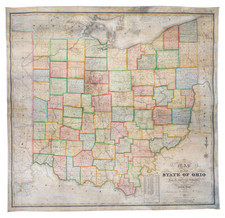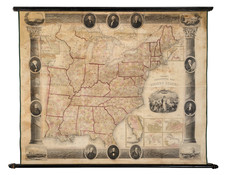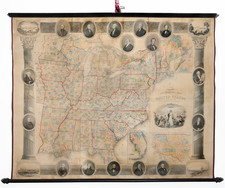Search
William Chapin (1802-1888) was a well-regarde engraver based in New York and Philadelphia during the early 19th century.
Chapin began as an apprentice to John Vallance in the Philadelphia firm Tanner, Vallance, Kearny & Company in 1817. This firm was renowned for its extensive cartographic work, including Tanner's early maps and atlases. Chapin purchased his freedom from Vallance for $125 in 1822.
Following his apprenticeship, Chapin established opened in own printimng business. His large Ornamental Map of the United States, which is considered the first American-published map to be engraved on steel. This innovation marked a significant advancement in the precision and durability of mapmaking.
Around 1839, Chapin transitioned from engraving to a role as Commissioner of Public Schools in New York. This career change marked the beginning of his deep involvement in education, particularly focusing on teaching blind children.
Chapin's most impactful work occurred at the Overbrook School for the Blind, where he made significant strides in educational methods for the blind. He published the first dictionary for the blind, a pioneering work that facilitated better communication and learning for visually impaired students. Chapin's contributions to both the fields of cartography and education for the blind have left a lasting legacy, reflecting his versatility and commitment to improving societal resources through his various roles.



